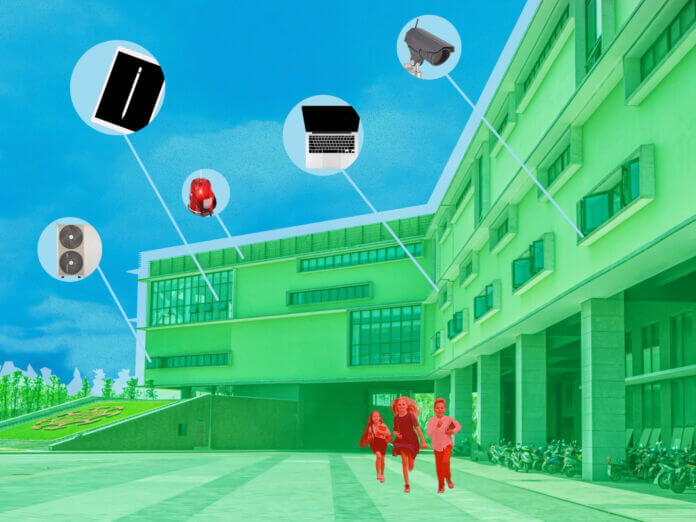
Zac Amos – November 12, 2024
Collected at: https://www.iotforall.com/5-challenges-of-implementing-iot-in-rural-schools
Technology is a key part of educational institutions for maintaining student success, and the Internet of Things (IoT) plays a large part in enhancing learning. Smart technologies have already shown immense potential in urban areas by enabling personalized learning experiences.
However, rural schools that want to implement IoT often face more complex challenges, from limited resources to geographic barriers.
5 Challenges
#1: Limited Internet Connectivity
In many rural areas, reliable high-speed internet is the greatest challenge to implementing IoT. A survey conducted by The 74 Million found that one-third of students in 18 rural Michigan schools lacked access to high-speed broadband. Smart technology relies heavily on stable internet to work effectively, but low connectivity creates obstacles for rural classrooms to implement these solutions.
Without consistent connectivity, students and teachers face disruptions when using digital resources. This hurdle impacts learning experiences and can lead to gaps in technology-based skill development. Furthermore, it can prevent real-time data transfer, which is crucial for monitoring and providing interactive learning.
One way to overcome this barrier is to leverage government and nonprofit funding. Several programs support broadband infrastructure in underserved areas. For instance, the E-Rate program provides schools with discounts on internet access and network infrastructure. Additionally, nonprofits and tech organizations often offer grants to enhance internet access in rural communications.
Local internet providers can also offer subsidized internet or infrastructure improvements. Working with these providers enables rural institutions to negotiate expanded broadband services at reduced costs, giving students the connectivity needed for IoT-enabled learning.
#2: Lack of Technical Expertise and Support
Smart technologies require specialized knowledge for installation, maintenance and troubleshooting. These skills may be ones that rural school staff have yet to acquire. The lack of in-house technical support can lead to disruptions in teaching and learning, along with delays in resolving technical problems.
Additionally, hiring or training staff with the necessary skills is often costly, so it may not be feasible within a rural school’s budget constraint. This lack of expertise can discourage districts from investing in IoT for fear that lack of support could lead to wasted resources.
Schools should provide technical training and workshops to educators to close this gap. They should consider exploring partnerships with nearby colleges or training centers to overcome the financial constraints. Many institutions offer outreach programs that provide technical assistance to local classes. In turn, rural districts can access skilled assistance without a full-time hire.
#3: High Costs of Infrastructure and Devices
Smart device implementation requires a hefty upfront investment because of the sensors, routers and servers schools must purchase and connect. These components can be costly, which can be challenging for districts with limited budgets to afford. Even after the initial purchases, further expenses involve ongoing maintenance, upgrades and technical support.
Rural schools often have lower funding, so they may need help prioritizing these costs over other pressing needs. This disparity can result in outdated technology that limits the benefits IoT could bring to education.
Rural schools could implement IoT solutions by starting with small, scalable solutions. These systems are often more affordable and can grow over time as needed.
For instance, academies could start with smart lighting systems to save on energy costs, allowing them to allocate those saved resources to other IoT investments. One school that implemented smart lighting reduced energy consumption by 41.4 percent, saving $33,665 annually.
#4: Security and Privacy Concerns
Protecting student data is a growing concern as smart technologies become more prevalent. Maintaining secure systems is especially critical in remote areas, as schools in these districts have limited cybersecurity resources. IoT devices collect and transmit lots of data, and part of this can include personally identifiable information. Weak security measures often lead to breaches, raising serious privacy concerns for rural communities.
Moreover, rural institutions may find it difficult to update smart devices with the latest security patches, making them even more vulnerable to cyberthreats. The lack of cybersecurity could make educators worry about compromising students’ privacy and overall network security, which may lead to hesitancy in adopting smart systems.
Implementing an IoT device management system is the top solution for maintaining security. Such platforms allow educational establishments to centralize control over all IoT devices, enabling monitoring and security updates. Increased control prevents unauthorized access and can more quickly identify security risks.
Additionally, schools can adopt basic security practices to strengthen their IoT ecosystem. These practices include:
- Using strong passwords.
- Enabling two-factor authentication.
- Conducting regular security checks to identify potential weaknesses.
#5: Power and Energy Constraints
Access to reliable power can be a hurdle for schools in remote areas when implementing smart technology. Smart devices require a steady power supply to function effectively. However, outlying schools may face limited electrical infrastructure, frequent power outages or high costs of powering multiple devices.
The added expense of powering IoT networks could be unmanageable for institutions already working within tight budgets. They can overcome this complication by exploring renewable energy options. Solar technology is becoming more accessible and cost-effective, and many grant programs cover the costs of installing these systems.
Furthermore, educators can prioritize energy-efficient smart devices to minimize power usage. School boards with power-conscious devices and a plan to use them during critical times can maximize the benefits of IoT.
Making IoT Implementation Possible
Implementing smart technologies in rural schools comes with several challenges, but they can be overcome. Various strategies make this possible, allowing classrooms to maximize the potential of IoT.

Leave a Reply